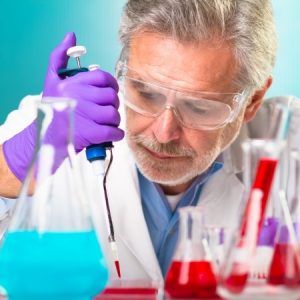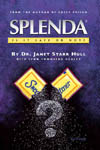
Kidney infections, kidney stones, and lower back pain. When your kidneys are sick, they’ll let you know.
If you pay attention to the signals early enough, you might avoid getting worse.
When I speak with someone experiencing kidney pain, they join the 90% who were using the yellow packet of Splenda® and were totally unaware that sucralose (Splenda) was shown in laboratory studies to adversely affect the kidneys.
Simply connect the dots.
Sucralose Is Splenda
Sucralose (marketed as Splenda) was created as a “low-calorie” sugar processed in the UK’s “Tate and Lyle lab”, and is marketed as a natural form of sugar.
That’s a spin of words – it’s not natural sugar after the manufacturing process is completed.

Here’s Splenda’s chemical formula: 1,6-dichloro-1, 6-dideoxy-BETA-D-fructofuranosyl-4-chloro-4-deoxy-alpha-D-galactopyranoside.
Sucralose (Splenda) is sold to you as benign sugar with a touch of chlorine, but you will see that’s not true.
Involving dozens of chemicals that you and I can barely pronounce – let alone should never consume – I have listed the actual process for producing this diet sweetener below. I highlighted the “chemicals used” in bold.

The 5-Steps To Splenda
According to the Splenda International Patent A23L001-236 and PEP Review #90-1-4 (July 1991), sucralose is synthesized by this five-step process:
1. sucrose is tritylated with trityl chloride in the presence of dimethylformamide and 4–methylmorpholine and the tritylated sucrose is then acetylated with acetic anhydride,
2. the resulting TRISPA (6,1′,6′-tri-O-trityl-penta-O-acetylsucrose) is chlorinated with hydrogen chloride in the presence of toluene,
3. the resulting 4-PAS (sucrose 2,3,4,3′,4′-pentaacetate) is heated in the presence of methyl isobutyl ketone and acetic acid,
4. the resulting 6-PAS (sucrose 2,3,6,3′,4′-pentaacetate) is chlorinated with thionyl chloride in the presence of toluene and benzyltriethylammonium chloride, and
5. the resulting TOSPA (sucralose pentaacetate) is treated with methanol (wood alcohol, a poison) in the presence of sodium methoxide to produce sucralose.
The Hidden Chemicals in Splenda

The chemicals used to synthesize sucralose in the five-step process (above) are more than just simple benign sugar with a touch of chlorine. The chemicals used to make sucralose (Splenda) are:
- Acetone
- Acetic acid
- Acetyl alcohol
- Acetic anhydride
- Ammonium chloride
- Benzene
- Chlorinated sulfates
- Ethyl alcohol
- Isobutyl ketones
- Formaldehyde
- Hydrogen chloride
- Lithium chloride
- Methanol
- Sodium methoxide
- Sulfuryl chloride
- Trityl chloride
- Toluene
- Thionyl chloride
So, do you think Splenda is just like sugar?
It’s time to admit that there is no free ticket to eating all the sugar-free products you desire without paying the high price of harming your body in the long run.

It certainly doesn’t sound very natural to me. Don’t be surprised if you feel it in your kidneys.
__________________________
If you want to learn more about health and disease prevention, contact me at janethull.com. Remember that you are never alone when you are looking for good health!
Gain access to all of my online programs, ongoing support, monthly Q&A, and more. I look forward to supporting you on your journey to alternative health and wellness.
_____________
Disclaimer: This article is for informational purposes only, and is educational in nature. The FDA may not have evaluated some of the statements. This article is not intended to diagnose, treat, cure, or prevent any disease. Please discuss with your own, qualified health care provider before adding supplements or making any changes to your dietary program.
Before taking vitamins, consult your doctor; pre-existing medical conditions or medications you are taking can affect how your body responds to multivitamins.
You have our permission to reprint this article if you attribute us with a live back-link to this article and the youtube links. https://janethull.com/